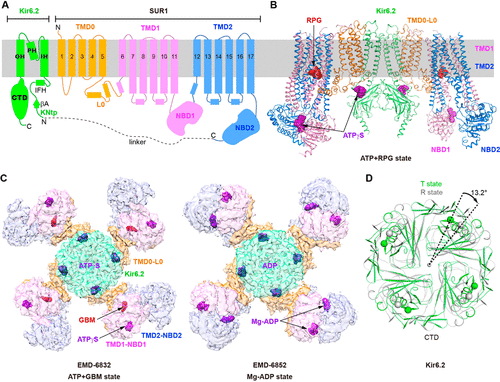Structural Insights into the Inhibitory Mechanism of Insulin Secretagogues on the Pancreatic ATP-Sensitive Potassium Channel
Sulfonylureas and glinides are commonly used oral insulin secretagogues (ISs) that act on the pancreatic ATP-sensitive potassium (KATP) channel to promote insulin secretion in order to lower the blood glucose level. Physiologically, KATP channels are inhibited by intracellular ATP and activated by Mg-ADP. Therefore, they sense the cellular energy status to regulate the permeability of potassium ions across the plasma membrane. The pancreatic KATP channel is composed of the pore-forming Kir6.2 subunits and the regulatory SUR1 subunits. Previous electrophysiological studies have established that ISs bind to the SUR1 subunit and inhibit the channel activity primarily by two mechanisms. First, ISs prevent Mg-ADP activation. Second, ISs inhibit the channel activity of Kir6.2 directly.

https://pubs.acs.org/doi/full/10.1021/acs.biochem.9b00692


